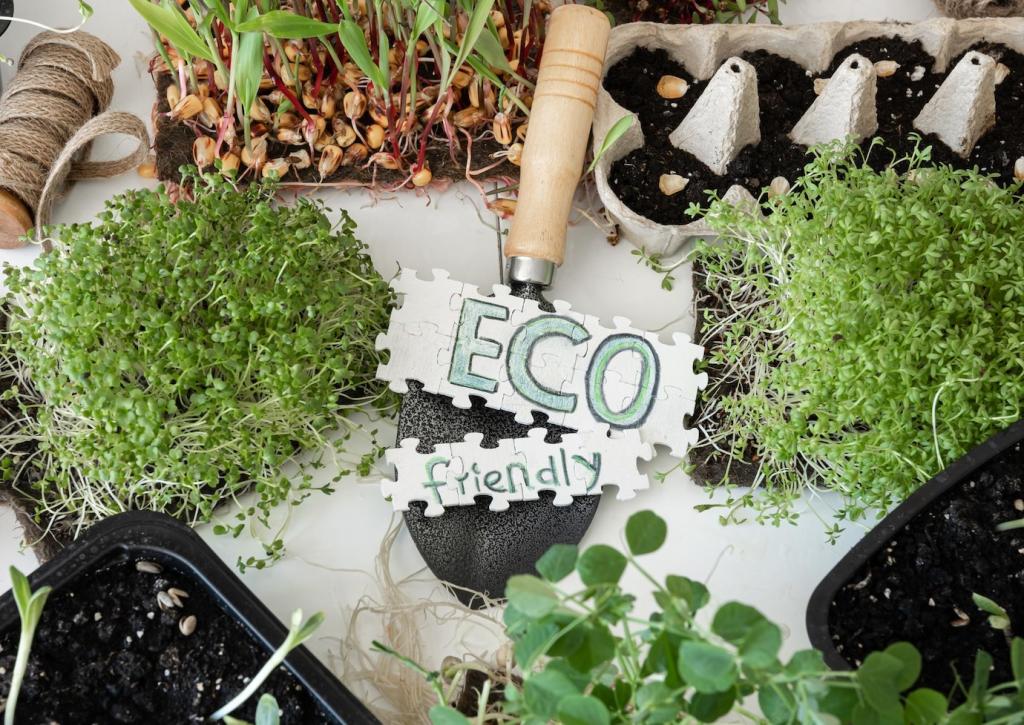Highlighting Eco-Credentials in Copywriting
Chosen theme: Highlighting Eco-Credentials in Copywriting. Welcome to a space where authentic sustainability data meets story-driven writing that earns trust, sparks action, and makes people feel proud about choosing better.

Why Eco-Credentials Matter to Modern Audiences
The Trust Gap and the Proof Customers Seek
Shoppers increasingly question bold green claims, and for good reason. They look for numbers, standards, and third-party validation that stand up to scrutiny. A reader told us she switched detergents after a brand openly listed ingredients, water usage reductions, and audit partners. That mix of clarity and humility changed everything.
From Planet-Saving to People-Serving Benefits
Tie environmental progress to everyday wins: quieter homes with efficient appliances, softer fabrics with low-impact dyes, or faster deliveries with consolidated shipments. Make the planet the backdrop and the person the hero. Readers respond when improvements improve their life today, not just the climate tomorrow.
Invite Dialogue to Strengthen Accountability
Transparency sharpens when audiences ask tough questions. Encourage comments, polls, and direct emails about claims. Ask what evidence would help them feel certain. Then publish updates addressing feedback. Want to help us refine our approach? Tell us which eco proof points you trust most and why.
Finding and Verifying Your Proof Points
Certifications That Carry Real Weight
Reference recognized standards like ISO 14001 for environmental management, FSC or PEFC for responsible forestry, GOTS for textiles, Fairtrade for ethical sourcing, and B Corp for holistic impact. Link to certificate IDs or public registries so readers can independently verify your status within seconds.
Quantify Impact with LCA and Clear Baselines
Use life cycle assessments to show cradle-to-grave impact. Always name your baseline year, system boundaries, and whether reductions cover Scopes 1, 2, or 3 emissions. When possible, cite an independent reviewer. Numbers anchored to methodology invite trust rather than skepticism.
Supplier Transparency and Chain of Custody
Map your supply chain and document transitions between handlers. Chain-of-custody records, batch IDs, and traceable invoices reduce uncertainty. Consider QR codes that reveal origin, materials, and audits at a glance. Readers appreciate when your evidence travels with the product, not just your promises.
Start with the headline metric readers crave, such as “38% less water versus a 2019 baseline.” Immediately explain boundaries, methodology, and limitations. Clarify what improved, what did not, and what comes next. Precision paired with candor beats vague optimism every time.

Voice, Tone, and Structure for Sustainable Messaging

Clarity-First Structure That’s Easy to Scan
Use the inverted pyramid: lead with the claim, support with evidence, then add context. Break information into digestible sections, bulleted proof points, and short paragraphs. Place links to certificates and reports near the claim to reduce friction and increase credibility.

Helpful, Humble, and Hopeful—Never Preachy
Adopt a tone that respects busy readers. Acknowledge imperfection, celebrate progress, and outline concrete next steps. Avoid guilt and grandstanding. People remember copy that invites partnership, not perfection. Ask: “What would you like to see us improve next quarter?”

Consistency Across Every Channel
Ensure your website, product pages, packaging, emails, and social captions use the same numbers, baselines, and definitions. Create a single source of truth and link back to it. Use a UTM-tracked CTA that points to your impact page to unify the narrative and measure interest.
Design and UX That Reinforce Eco Claims
Design dedicated proof sections featuring recognizable certification logos accompanied by certificate numbers, dates, and links to registries. Provide alt text that explains the claim, not just the logo name. Visual clarity prevents confusion and supports accessibility goals.
Compliance: Say It Right, Stay Safe
Review the FTC Green Guides in the United States, CMA guidance in the United Kingdom, and ACCC resources in Australia. Different jurisdictions have different expectations for qualifiers, comparative claims, and substantiation. When in doubt, add context or consult counsel early.

Keyword Strategy with Integrity
Target specific queries like “FSC-certified dining table,” “GOTS organic cotton tees proof,” or “ISO 14001 manufacturer verification.” Align content with search intent and land readers on pages where the data sits, not generic brand copy that buries the details.
Structured Data and Rich Results
Use Product, Organization, and FAQ schema to surface key details, certificates, and definitions. Keep claims consistent between markup and visible copy. Schema won’t replace evidence, but it helps searchers find the proof they came for quickly and confidently.
Newsletter and Community Amplification
Share quarterly progress notes, supplier spotlights, and behind-the-scenes audits. Invite subscribers to submit questions for live Q&A sessions with your sustainability lead. Ask readers to forward issues to friends who care about credible climate action and smarter purchasing.
Metrics and Iteration That Strengthen Trust
Define Success Beyond Clicks
Track assisted conversions, time on proof pages, download rates for reports, and opt-ins to sustainability updates. Add a micro-survey asking whether claims were clear and sufficient. Trust metrics, not just traffic, reveal whether your eco story truly resonates.
Test Messages Ethically and Transparently
Run A/B tests on headlines, evidence placement, and CTA language, but keep the underlying data constant. Never pit verified facts against fluff. Testing should optimize comprehension, not exaggeration. Share learnings with your community to invite continuous input.
Close the Loop with Honest Updates
Publish progress even when goals slip. Explain why, what you learned, and how you will adapt. Readers value brands that treat sustainability like a journey, not a slogan. Subscribe for quarterly updates, and tell us which metrics you want us to report next.

Join our mailing list
